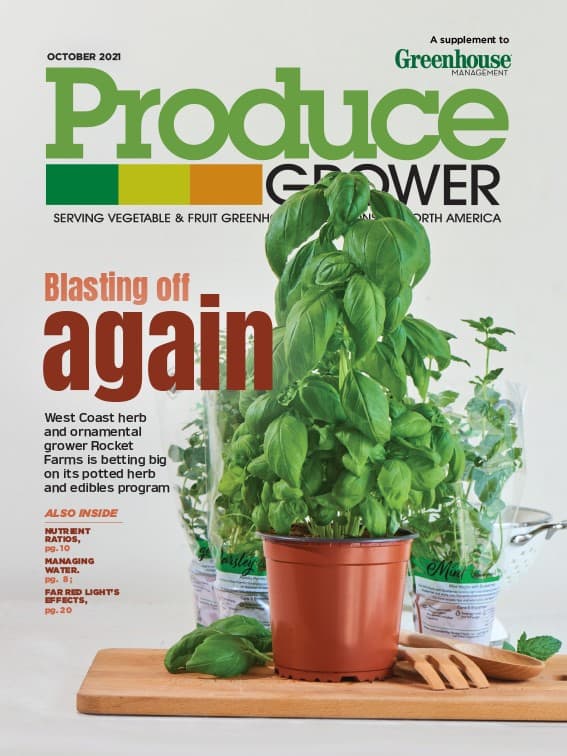

Produce Grower: What is Unfold and what do you do?
John Purcell: When I was heading R&D for Bayer vegetables, we were looking at the vertical farming space and thinking, what can we do to provide some products and solutions for that sector? We recognized that the best way to do that was to launch a separate company — Unfold. Bayer and a large firm out of Singapore, Temasek, provided $30 million to start Unfold with this idea that we’ll be 100% focused on providing seeds for the vertical agriculture sector. So that’s what Unfold is. We’ve been around for about a year now. We’re building our own R&D facility in Davis, California. We’ve also started trialing at a Bayer site near there and with external customers as well.
PG: What’s different about being a seed provider for vertical farms versus typical outdoor farms?
JP: When you’re breeding lettuce, for example, for open field production, a lot of your time is spent trying to provide a robust disease resistance package. So, one advantage of vertical farming is you’re indoors, so you dramatically reduce pest pressure. The other thing is when you’re breeding for outdoors, the weather conditions can change dramatically. So, you also have to build in a certain amount of reliability for that crop to thrive under diverse environmental conditions. But in indoor agriculture, you’re controlling that environment, so you don’t have to worry so much about if the plant will be successful under all these different conditions, which allows you to focus your breeding on quality traits at the consumer level.
PG: Where do you see the vertical farming industry going in the future?
JP: Most of the investments in vertical so far have been on the operational side. But now you’re seeing companies like Unfold trying to provide the raw materials and seeds that make vertical farms successful. So that’s one evolution that’s happening. Another is the portfolio of crops. Vertical farms are heavily focused on leafy greens like spinach and lettuce, and also microgreens, herbs and spices. But to reach its full potential, the industry has to make the leap to fruit crops. There are a couple of vertical farms looking at tomatoes, berries, peppers and cucumbers, and that’s a big shift. You have to grow the whole salad, not just the leafy greens.

Explore the October 2021 Issue
Check out more from this issue and find your next story to read.
Latest from Produce Grower
- Chilli thrips (Scirtothrips dorsalis)
- GS1 US Celebrates 50-Year Barcode 'Scanniversary' and Heralds Next-Generation Barcode to Support Modern Commerce
- University of Florida offers Greenhouse Training Online program on irrigation water
- Flower trends in full bloom
- Nominate an outstanding leader
- New Florida Extension Agent Will Teach Stakeholders About Food Safety
- Paint it black
- Regular checkups





